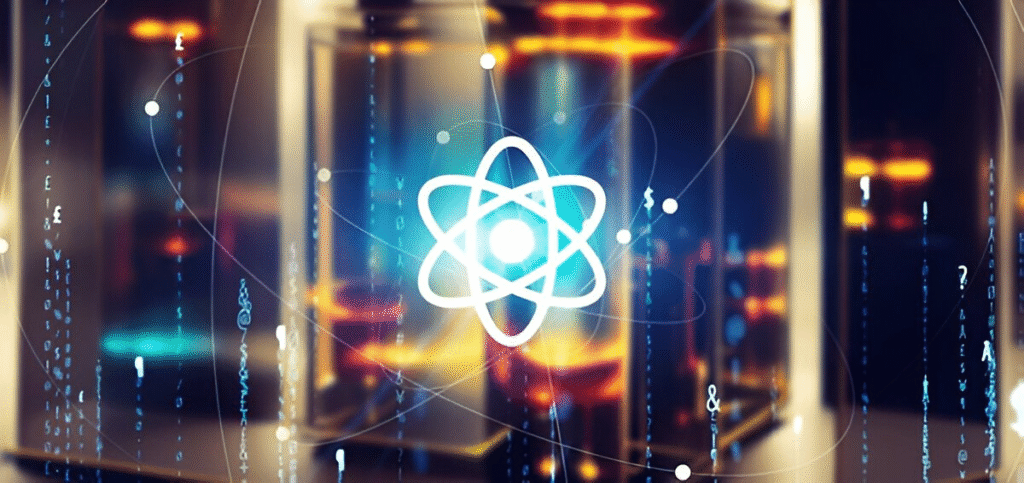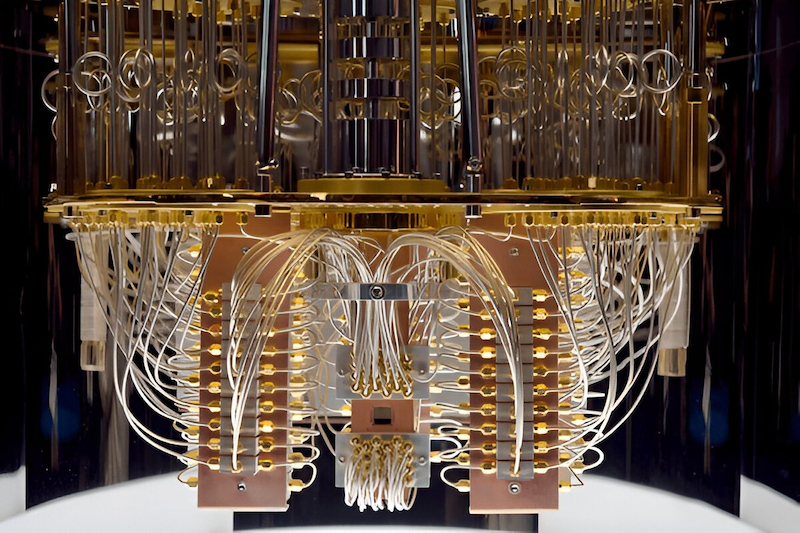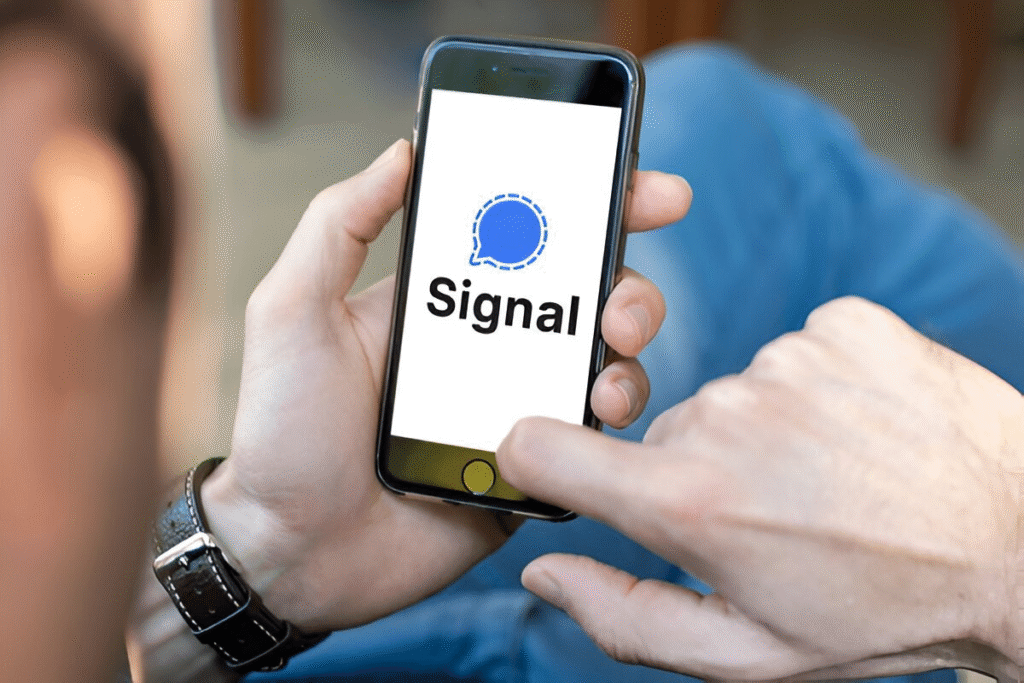You’ve learned what quantum computing is and how it differs from classical computing. Now, it’s time to explore what makes this revolutionary technology tick. This article pulls back the curtain to reveal how a quantum computer works, what it’s made of, and the incredible physics that makes it possible.
Let’s unpack the core elements of quantum technology and understand how this futuristic computing model is becoming a reality.
How Does a Quantum Computer Work?
At its core, a quantum computer uses the laws of quantum mechanics to process information. Instead of working with bits (which represent either 0 or 1), quantum computers use qubits, which can represent multiple states simultaneously thanks to the phenomenon of superposition.
These machines process and manipulate qubits using sophisticated hardware systems that maintain strict quantum conditions, such as extreme cold and isolation from environmental noise.
Unlike classical computers that follow linear logic gates, quantum computers rely on quantum gates to perform operations on qubits. These gates manipulate the quantum state of a qubit through rotations and entanglement, enabling massively parallel computations.
Quantum Computer: Core Principles
Superposition
Superposition allows a qubit to exist in a combination of 0 and 1 states at the same time. Think of it like spinning a coin—until it lands, it’s in a mix of both heads and tails.
This principle lets quantum computers explore many possible outcomes simultaneously, giving them an edge for solving problems too complex for classical computers.
Entanglement
Entanglement is a quantum link between qubits. When two qubits are entangled, the state of one instantly influences the other—regardless of the distance between them.
Entangled qubits are crucial for quantum speedups, enabling operations that depend on the correlation between qubit states to execute efficiently.
These principles aren’t just quirks of physics—they’re what give quantum computers their immense processing power.
Qubits: The Heart of Quantum Information
A qubit is the quantum equivalent of a classical bit, but far more powerful due to its ability to exist in multiple states at once. Represented mathematically on a Bloch sphere, a qubit’s state can be visualized as any point on a sphere, not just the north (0) or south (1) poles.
So, at its core, quantum information relies on the physical qubit. This is the actual hardware – be it an atom, an electron, a superconducting circuit, or a photon – that we employ to hold and manipulate quantum information, making it the true engine of quantum computation.

Therefore, qubits can be implemented in various physical forms, such as:
- Superconducting circuits (used by IBM, Google)
- Trapped ions (used by IonQ)
- Photons (used in optical quantum computing)
- Quantum dots, topological qubits, and more
Each of these technologies has its own advantages and disadvantages in terms of coherence times, gate fidelity, scalability, and operational requirements.
Current quantum computers utilize physical qubits to perform computations, but the focus of much research is on improving their stability and using them to create fault-tolerant logical qubits for more complex and reliable quantum computation.
Essential Components of a Quantum Computer
A functioning quantum computer involves several interconnected parts, each playing a crucial role in maintaining and manipulating qubits:
1. Quantum Processor (QPU)
The Quantum Processing Unit (QPU) holds and processes the qubits. It’s the brain of the system where quantum gates operate.
2. Control Electronics
These systems send precise signals—microwave, laser, or optical pulses—to manipulate individual qubits or entangle them with others.
3. Cryogenics
Qubits are extremely sensitive to heat. Most quantum processors must be cooled to near absolute zero using dilution refrigerators to prevent decoherence.
4. Quantum-Classical Interface
Quantum computers still need classical systems to prepare input and interpret results. This interface bridges quantum operations with conventional logic.
What Does It Take to Build a Quantum Computer
Creating a practical quantum computer isn’t as simple as stacking more qubits together. It demands rigorous control over several physical and technical aspects:
Isolation
Quantum states are fragile. Any interaction with the environment—vibrations, electromagnetic waves, or heat—can disrupt the system. Shielding and vacuum chambers are essential.
Low Temperatures
Many quantum systems operate at a few millikelvins, colder than outer space. This temperature helps stabilize qubits and reduce thermal noise.
Coherence Time
This is the time a qubit can maintain its quantum state before it decoheres. Longer coherence means more time to perform calculations.
Error Correction
Quantum error correction is one of the biggest challenges. It involves encoding information across multiple qubits to detect and fix errors without measuring the actual quantum state.
Key Quantum Phenomena at Work
In addition to superposition and entanglement, several other quantum principles underpin this technology:
- Quantum Tunneling: Enables particles to pass through barriers, useful in quantum annealing.
- Quantum Interference: Helps amplify correct solutions and cancel out wrong ones in algorithms.
- No-Cloning Theorem: States that quantum information can’t be copied exactly—this has implications for quantum security and error handling.
These phenomena break the boundaries of classical intuition, yet they’re the foundation of what makes quantum technology so powerful and promising.
Types of Quantum Computer Technologies
As the field grows, researchers are exploring different approaches to building quantum machines. Here are the major types in development today:
Superconducting Qubits
These qubits, used by Google and IBM, rely on circuits cooled to near absolute zero. They are fast and relatively easy to fabricate using existing chip technology, but struggle with short coherence times.
Trapped Ion Qubits
Ions are suspended in electromagnetic fields and manipulated with lasers—a technique adopted by companies like IonQ and Honeywell. This method provides very stable qubits but is slower and harder to scale.
Photonic Qubits
Photons don’t need cooling and can travel long distances, making them ideal for quantum communication—a direction pursued by companies like Xanadu and PsiQuantum. However, implementing gates with light remains extremely challenging.
Topological Qubits
These theoretical qubits, explored by Microsoft, rely on the braiding of quasiparticles. If realized, they could offer high fault tolerance and minimal error rates, though practical implementation remains distant.
Quantum Dots and Neutral Atoms
These approaches use semiconductor nanostructures or laser-cooled atoms to encode information. They offer potential for miniaturization and integration into existing tech.
Each method represents a unique path toward scalable quantum computers—and the race is on to see which one (or combination) will dominate.
Quantum Computer Journey: Looking Ahead
Quantum computing is no longer just a theory—it’s a rapidly advancing field with real-world progress across multiple technologies. From superposition and entanglement to superconducting circuits and ion traps, the foundations are being laid for a new era of computation.
Understanding the core components and challenges helps demystify the complexity and highlights the innovation driving this revolution. As researchers push boundaries, the next leap will involve overcoming scalability, error correction, and performance limitations.
In the next article, we’ll explore real-world applications of quantum computing, how industries are preparing for this shift, and what breakthroughs might come next. Stay tuned.
If you missed the first post—“Quantum Computing Breakthrough: Explained Simply and Clearly”—give it a read to better grasp the basics behind this powerful technology.


